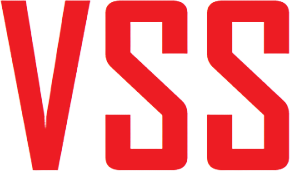The Pandemic has changed the World forever and for many types of businesses the new normal will be particularly challenging.
As well as adapting sales, marketing and the delivery of services business people need to look at the suitability of their operational systems to meet the demands of the new normal.
Many will shy away from this latter aspect in the belief that such changes will be painful and expensive but the good news is that both these negatives can be avoided.
Please read on in order to learn how.
 |
First of all understand that system change does not have to involve a big bang approach.
Big bang is what the big players in the software marketplace will tell you is the way forward because big is most often inflexible. |
This is because for a big software company non-standardisation is difficult, sometimes impossible, to manage.
The VALE approach is to enable integration between systems so that changes can be implemented in manageable chunks at a time.
How This Can Work
| The starting point is simple just look at the systems that run the operational sides of the business and identify those that cause the most pain and ask the users who suffer that pain to list the reasons why.
You may be surprised by what you learn from this open and honest approach. |
 |
This is good because fixing the issues will make a real positive difference to the operations of the business.
Here are a few examples that we at VALE have encountered over the years that we have been implementing software.
A company struggling with billing – In this case the businesses ledger systems and stock control were working well but managing service and contractual billing was painful.
 |
The end users were reduced to employing spreadsheets to hold pricing and terms details and so invoicing on-going was very manual and because most of it occurred towards the end of the month it placed huge pressure upon those doing the billing.
Also people had to be diverted from other jobs to meet the billing deadlines. |
VALE took the contents of the spreadsheets and loaded them onto the VALE billing system digitally as well as the customer details, product codes and prices and integrated to the existing accounts system so that invoices that were produced much more easily on VALE could be posted into the existing sales and nominal ledgers.
Where the invoices contained goods sold that needed delivering VALE produced the Delivery Note and the staff in the warehouse picked the goods and posted the issues in the existing stock system.
The staff were trained, the software provided, the integration provided and all of this on the basis of a monthly rental.
The result was removal of the pain, negligible change pain and low cost expenditure spread over the months so the changes paid for themselves almost immediately.
A company struggling to manage stock and warehouse operations – Again the accounts departments were comfortable with their existing sales, purchase and nominal ledgers and also coping very well with billing.
 |
However there were recurring problems controlling stock. Regular stock checks found discrepancies particularly for fast moving lines of which a significant percentage were supplied free of charge.
An experienced VALE consultant visited, free of charge, and spent two days in the main warehouse observing operations. |
His findings, which were presented to the Board, found that the current stock/warehousing system allowed lack of discipline when issuing goods and failures to control stock coming in.
In short because of the pressure to get goods out there were cases where stock would be picked, physically, before it was booked in, that stock paperwork was input after the goods had moved and that engineers visiting to take stock for urgent calls from time to time failed to pass on the information that the stock should have been issued on the system.
VALE replaced the stock and warehousing system and introduced bar code readers in order to increase efficiency. Stock now had to move in real-time so no goods could move if there were none in the fixtures.
The Delivery Notes had bar codes on them and nothing could move out without the bar codes having been read.
VALE also enabled integration to the main suppliers’ systems so that ordering goods and booking them in could be more automated thus saving time for warehouse operatives.
Yes there was some pain in that a full stock check had to take place before the VALE part of the systems went live but again the transition was paid for by a monthly rental so payback was swift.
A company lacking efficient systems for the provision of service – A new service manager joined the company and was surprised to find that service calls were being processed via Excel, that every engineer started his or her day at the HQ to enter their calls for the day onto service sheets and to draw parts that they thought would be needed.
| The operational systems other than this were performing satisfactorily but having employed VALE during his time working for a major distributor the service manager approached us to see how we could help.
He knew that the VALE service call processing sub-system would enable a great deal of time and effort to be saved |
 |
VALE did not replace the main system but introduced service call processing software that linked to the machine and customer details on the existing system and the VALE engineering stock system was deployed for parts.
The field engineers were provided with VALE’s smart phone application so there was no need to visit HQ each day and car stocks were introduced for fast moving parts which were replenished automatically and delivered to drop boxes near the engineers’ homes.
The changes were very welcomed by the engineers and the number of calls per day per engineer were increased by 33% which more than paid for the monthly rental.
A company needing to improve sales – This Company had a system that ran all their main operations very well but the Directors were concerned that there were too many cases of customers being sold to by competitors.
 |
The sales team were employing ACT but VALE, when consulted, quickly identified that because it was not integrated to the operational systems at all that customer defence was a major weakness.
VALE could have enabled ACT to be updated but as there was an off the shelf proven option that was selected. |
VALE replaced ACT with SALESLink which was integrated to the existing operational software so salespeople had full visibility of their existing customers and were able to see areas of opportunity to upgrade contracts.
The switchover was carried out almost seamlessly and as a result not only were the salespeople very pleased with their new tools but the haemorrhaging of sales ceased as a result.
If you can identify system pain in your business treating it effectively does not mean out of necessity an all-encompassing change of systems.
Talk to VALE because our integration skills and knowledge of sales and servicing companies is second to none – enquiries@vale.co.uk
